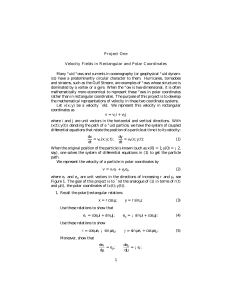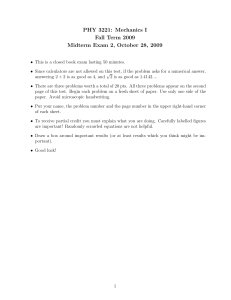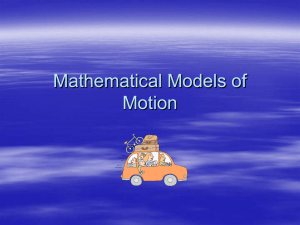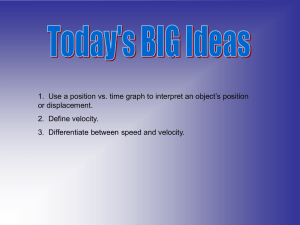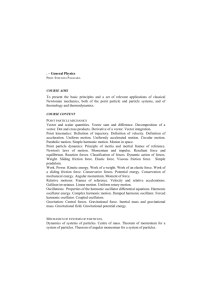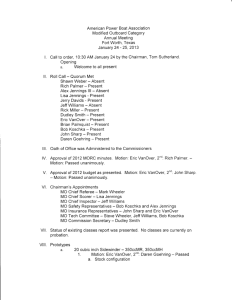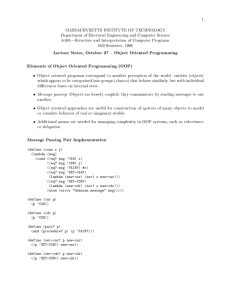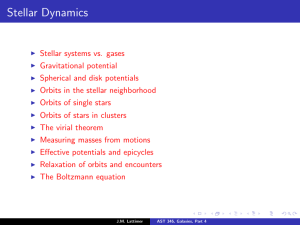General Curvilinear Motion
advertisement
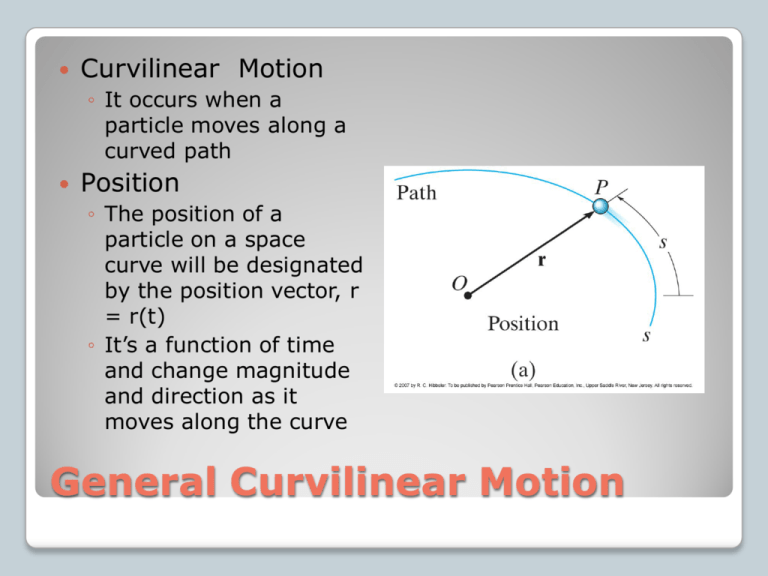
Curvilinear Motion ◦ It occurs when a particle moves along a curved path Position ◦ The position of a particle on a space curve will be designated by the position vector, r = r(t) ◦ It’s a function of time and change magnitude and direction as it moves along the curve General Curvilinear Motion Displacement ◦ Represent the change in the particle’s position and is determine by vector subtraction r r - r General Curvilinear Motion Velocity ◦ During the time interval Δt, the average velocity r v avg t ◦ With smaller value of t , the instantaneous velocity dr v dt The speed, ds v dt General Curvilinear Motion Acceleration ◦ Provided the velocity of the particle is known at the two points P and P’ during the time interval Δt, a avg v t ◦ With smaller value of t , the instantaneous acceleration dv d 2r a 2 dt dt General Curvilinear Motion The motion can be describe along a path that can be represented using a fixed x, y, z frame of reference Position ◦ The position of a particle P at a point (x, y, z) on the curve s, is defined by the position vector r xi yj zk r x2 y 2 z 2 u r r/r Curvilinear Motion: Rectangular •Position dr d d d v ( xi) yj zk dt dt dt dt d xi dx i x di dt dt dt dr v vx i v y j vz k dt vx x v y y vz z v vx2 y y2 z z2 u v v/v Curvilinear Motion: Rectangular •Acceleration dv a ax i a y j az k dt ax vx x a y v y y az vz z a a a a 2 x 2 y 2 z u a a/a Curvilinear Motion: Rectangular The free-flight motion of a projectile is often studied in terms of its rectangular components, since the projectile’s acceleration always acts in the vertical direction Motion of a Projectile Horizontal Motion Vertical Motion ay g ax 0 vx v0 x x x0 v0 x t v y v0 y act y y0 v0 y t 12 act 2 v v 2 y 2 0 y 2ac y y0 When the path along which a particle is moving is known, then it is often convenient to describe the motion using n and t coordinate which acts normal and tangential to the path Planar Motion ◦ Tangential component Unit vector, ut ◦ Normal component Unit vector, un CM: Normal and Tangential Velocity ◦ The particle’s velocity has a direction that is always tangent to the path and a magnitude that is determine by taking the time derivative of the path function s=s(t) v vu t where, v s CM: Normal and Tangential Acceleration ◦ The particle’s acceleration is the time rate of change of the velocity a v v ut v u t where, s v u t un un u n CM: Normal and Tangential Acceleration a at ut an u n where, at v at ds vdv an a v2 a 2 t a 2 n CM: Normal and Tangential Some engineering problems involve angular position and a radial distance Polar coordinates ◦ Radial, r (ur) ◦ Transverse, θ (uθ) Position r vu r CM: Cylindrical Velocity v r rur r u r where, u r u r lim lim u t 0 t t 0 t u r u v vr u r v u vr r v r CM: Cylindrical Acceleration a v rur r u r r u ru r u u lim u r t 0 t t 0 t u u r where, u lim a ar u r a u ar r r 2 a a a r 2r 2 r a2 CM: Normal and Tangential Cylindrical coordinates ◦ Radial, r (ur) ◦ Transverse, θ (uθ) ◦ Altitude, z (uz) Position, velocity and acceleration rp r u r z u z v r u r r u zu z 2 a r r u r r 2r u zu z CM: Cylindrical
